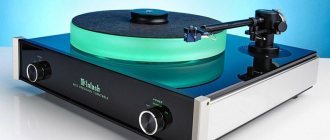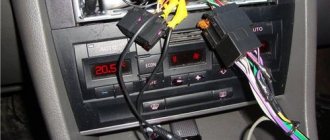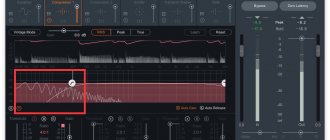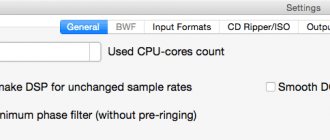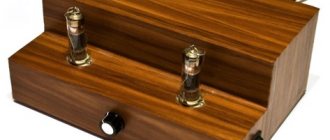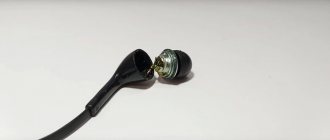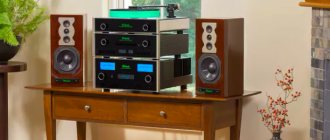Save and read later -
Music is not only the sound itself, but also the atmosphere around it. For example, vinyl: caring for a player and record collection is a whole ritual for many connoisseurs.
But above all, this is a necessity, because otherwise the records will deteriorate, sound bad, and the collection will look untidy. In this article we will tell you what a beginner vinyl lover needs to do.
Photo by soaringbird / CC-BY
The tips discussed below fall into the basic category. This means that they will be relevant for all vinyl lovers, and especially for beginners - regardless of whether you bought your first turntable or decided to revive an old device and listen to records from childhood. If you follow a few simple rules, your new equipment will last you longer, and old and rare recordings will not soon lose their charm.
Store records in special sleeves
After listening to the record, put it back in the envelope so that it doesn’t gather dust or you accidentally spill something on it. At the same time, if you often listen to a record, take it out and put it back and forth, then the original sleeve will sooner or later become unusable. In addition, regular paper sleeves can scratch the record. A scratched section of the record will sound distorted, and if the damage is severe, it may not play at all.
Photo heidl / Public Domain Mark 1.0
Envelopes are divided into outer and inner. External ones can be anything - as long as you like them. And the internal ones should protect the records from dust, scratches, and the accumulation of static electricity, so you shouldn’t choose just which ones. It is best to use plastic or polypropylene envelopes.
How to properly wash vinyl
Most vinyl-based records were released quite a long time ago, and they were used quite actively (especially during ceremonial feasts). In addition, not everyone followed the rules for storing them, taking them exclusively by the edge with the fingers or palms of both hands, and after listening, be sure to pack them in a plastic case and a paper bag. Therefore, today's collectors are often faced with finding a solution to the problem of how to wash vinyl records at home and clean them of dirt, eliminating the risk of damage.
One of the main reasons why dust and dirt accumulate on a vinyl record is static electricity. Regular periodic moistening of the work surface allows you to get rid of static for some time. This means minimizing the accumulation of clumped dust and dirt in the grooves - one of the main problems that renders the record unusable and makes it impossible to listen to it. In addition, thorough rinsing removes grease stains and other contaminants.
There are several ways to moisten vinyl:
- using a non-fibrous swab or velvet cloth soaked in warm water;
- under running warm water from a tap;
- soaking the plate in a basin for 2-3 minutes;
- using a special solution.
As for the last point, the solution recipe may be different.
Many people mix isopropyl and ethyl alcohol with distilled water in approximately equal proportions. In addition, today there are many different products on the market that provide gentle and effective care for vinyl records with different chemical compositions. True, their choice should be approached as carefully and carefully as possible - some of them have a very aggressive effect. This is especially true for so-called picture plates, the paint on which can simply bleed. But experts and experienced collectors strongly do not recommend using ordinary household products for washing and disinfecting dishes. Such products are unlikely to be able to remove caked dust in deep grooves. At the same time, it will take a lot of water to wash off the large amount of foam that forms. And such abundant water baths are contraindicated for vinyl by definition.
Before washing, it is necessary to protect the center of the record, often called the “apple” among music lovers, from moisture. Otherwise, a paper (usually) label can easily bubble, warp, peel off, or completely lose its original appearance. The easiest way to do this is to use a polyethylene lining that matches the size of an “apple”.
It is best to structure the washing process as follows:
- soak the plate for several minutes in a bowl of warm water or heated detergent, which helps remove stuck dirt from the microscopic grooves;
- Thoroughly rinse the disc from the detergent composition, if it has been used, with tap water or using a shower;
- shake the disc to get rid of large drops, and then wipe very carefully with a rag or towel, being careful not to leave scratches.
After all the procedures listed above, you can begin the process of directly removing dirt, absorbed grease and stains.
Away from sun, heat and moisture
It is unlikely that you will be able to allocate a separate room for storing records and monitor its microclimate, but you still need to follow simple conditions.
Place records away from radiators, heaters and other heat sources. These sources can be the most unobvious - for example, cats. Brittany McCrigler told the story of how her cat took a nap on the record, leaving his mark on it. Fortunately, the record was restored with the help of two plates and an oven.
To prevent fungi and mold from growing on envelopes, avoid damp places. We understand that you are not going to put a cabinet with records in the bathroom, but you shouldn’t store them, say, in a wooden house or in a garage. Finally, your collection should not be exposed to direct sunlight to prevent the roots from fading.
Experiment with PVA glue
There is a method for cleaning vinyl (it is usually recommended by experienced audiophiles) that involves using regular PVA glue. But there are risks here. It seems that everything is elementary: you need to apply a thin and even layer of glue to the place on the vinyl disc where complex contaminants are localized; wait a little until the glue dries; and then just carefully remove this adhesive film along with the dirt stuck to it.
Good instructions, right? Simple and useful. But is it safe? Experts do not entirely agree that this processing method is harmless.
Today, together with one of the experts invited to visit us (by the way, this man is a renowned collector of vinyl, and has been restoring it on his own for 15 years) conducted an interesting experiment.
We donated two records in the name of an important experiment: a fairly new one (Nirvana - album In Utero), but a little dirty due to the carelessness of the owner (a greasy mark with dust stuck to it) and an old one (Ella Fitzgerald, Louis Armstrong - album Ella and Louis), in in the grooves of which a dense accumulation of dirt can be seen. Both vinyls were carefully cleaned with PVA glue (we used a good, unexpired, high-quality, properly stored product from a well-known German stationery company). Next, we took a microscope (the Soul's Sound team prepared as best they could: someone took a magnifying glass, someone put on glasses, and someone just tried to squint =)) and properly looked at what happened to the dirt. Oil painting: the new plastic on a 5-point scale was cleaned at 4 plus, or 5 minus, because in the depths of the grooves there was still a small deposit of dust (but it is minimal and visible only under a microscope, and the greasy mark is completely disappeared, which we were incredibly surprised by); the old record was cleaned with a 3-minus, and to be completely honest, a solid 2, because in the grooves a dense layer of dirt (almost all of it) remained lying like a dead weight - and that’s not so bad, since in addition to it, traces of glue were clearly visible in some grooves.
From this it becomes clear that the process of cleaning vinyl discs using PVA glue is a risky activity, and besides, it is not particularly effective for serious, stubborn dirt.
How to clean records
A budget option is microfiber cloths. They can easily remove simple contaminants: dust on the surface, dirt and grease from your fingers. On the other hand, microfiber particles can become clogged in the sound grooves. To clean the record more thoroughly and, most importantly, without consequences, you need to use special brushes.
The most advanced option is a vinyl cleaning machine. It, in combination with a cleaning liquid, gives the best result, completely removing dirt from the records.
Additional cleaning
Given the steady increase in popularity that vinyl records have recently seen, vinyl care products are in constant high demand. And today’s market is by no means limited to the types and reagents listed above, offering a wide variety of solutions. In addition to traditional brushes and special velvety pads, you can now find special rollers, liquid-based restoration mixtures, special compounds that apply a microscopic film to the work surface, and even mini-vacuum cleaners.
By the way, about vacuum cleaners. To deeply clean contaminated storage media, it is quite acceptable to use an ordinary household vacuum cleaner. To do this, put a flannel rag with a small slit on the suction socket. You can secure it securely enough using quite ordinary rubber bands for money. The power of the vacuum cleaner when cleaning records should not be at maximum, and the flannel reliably protects the disc from the risk of mechanical damage. Of course, extreme caution must be taken when using this cleaning method.
Among music lovers and collectors, quite an old debate continues about how effective PVA-type adhesive composition is for cleaning. The essence of the method is as follows. A thin and even layer of high-quality glue is applied to the area where the disc is heavily soiled. It is given some time to dry, after which the resulting film is removed from the surface of the plate. And along with it, the dirt stuck to the adhesive film is also removed.
Many people find this cleaning method simple and effective. Opponents of the method deeply doubt the ability of the glue to remove deep-seated dirt and insist that the components of the glue negatively affect the structure of the vinyl.
Cleaning the needle
In addition to the vinyl record, cleaning the stylus of the pickup is necessary. You can buy special liquids and kits for mechanical cleaning. Contents: liquid and brush. To clean the stylus of a vinyl player, you need to apply a special solution to the brush. Next, use a brush to carefully clean the surface of the needle.
Movements are directed along, not across. Thanks to this, the crystal is not overloaded. If signs of deformation or damage are visible, it must be replaced. New turntable needles are of high quality. The entire range is presented in the Gromofon store catalog.
Vacuum washing
Record Doctor VI
An excellent representative of the class of “vacuum cleaners for vinyl.”
But you need to take into account that this is a machine for dry cleaning of records: the suction slot is located directly on the body, that is, it processes the underside of the record. It is clear that gravity simply will not allow you to cover the record with the cleaning solution from bottom to top. Amazon
Pro-Ject - VC-E Record Cleaning Machine
Vacuum cleaner for wet cleaning.
Unlike Record Doctor VI, Pro-Ject's model has a suction tube that cleans the top side of the record. And this allows (and even requires) the use of a cleaning solution directly during the cleaning process. An uncompromising option for those who do not care about price. Amazon
Okki Nokki MK II
The manufacturer claims that the MK II motor is quite quiet, but it is unlikely that any vacuum cleaner can be made to sound absolutely silent.
The motor used in this model is designed to operate for several hours without overheating. However, it is recommended to drain the water from the container every 20 plates. But the cleaning process is very simple thanks to the presence of a drain tube. Amazon
Pro-Ject - VC-S2 ALU Record Cleaning Machine
The company calls the VC-S2 a “reference class” washer.
Its motor takes only two seconds to spin the record completely. For best results, Pro-Ject recommends spinning the record one revolution forward and one revolution backward. Thus, it will take no more than 5 seconds to clean one side. Amazon
In short, this is a specially designed vacuum cleaner that is not afraid of moisture. The plate is mounted on a rotating platform, watered with a cleaning solution, and a suction tube with a slot along which bristles are located is lowered onto the plate across the grooves. The power is turned on and the record begins to rotate in the same way as on a regular player, and the washing liquid along with all the “garbage” is sucked through a tube into a special container.
Vacuum washers have one huge disadvantage - their price. Often it is comparable to the price of not the worst player. Taking into account the fact that records need to be washed not every day, and under normal conditions not every year, the purchase of such a unit is of interest only to the most avid collectors.
